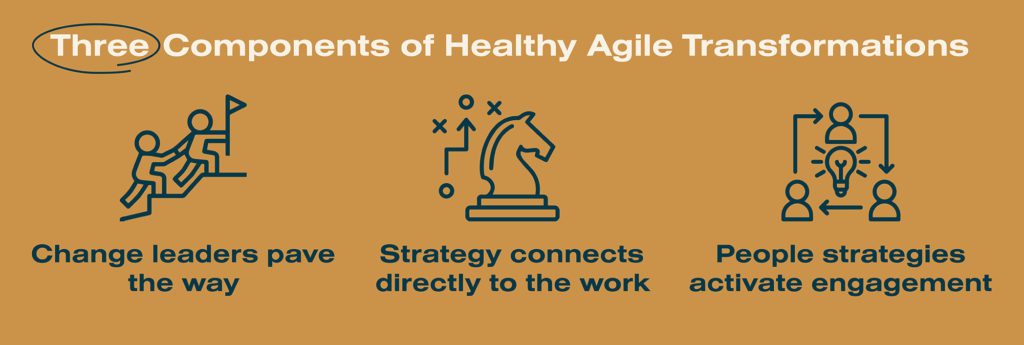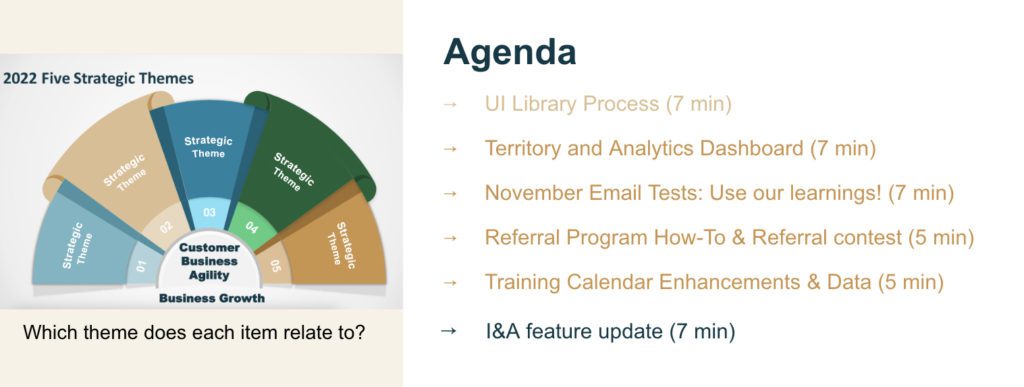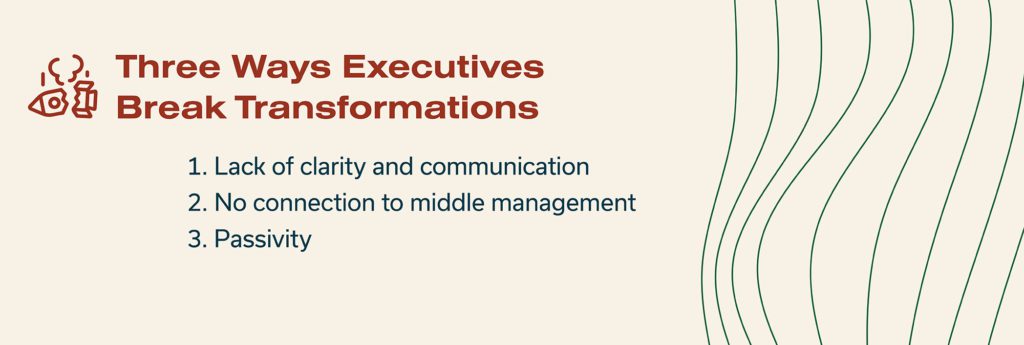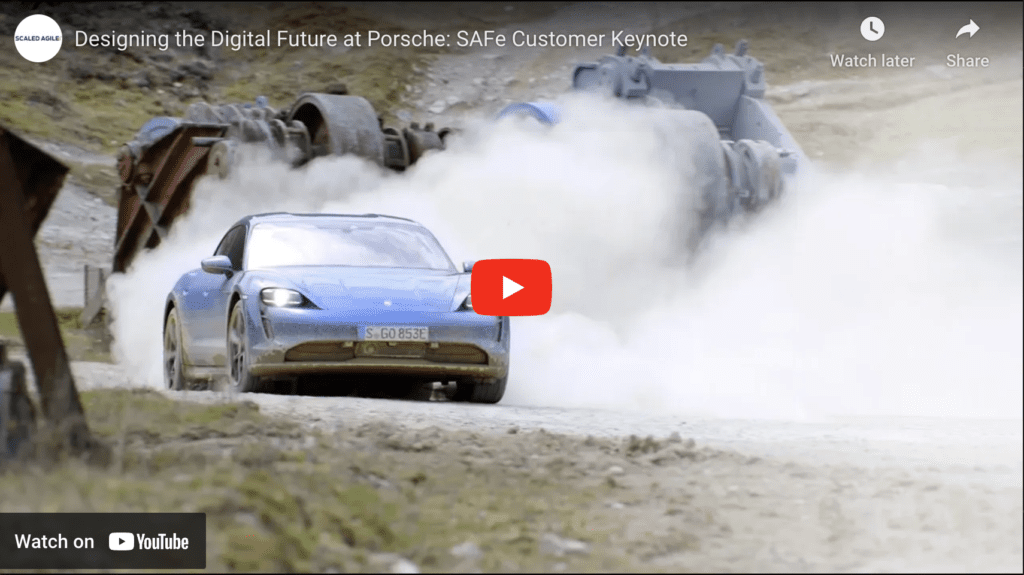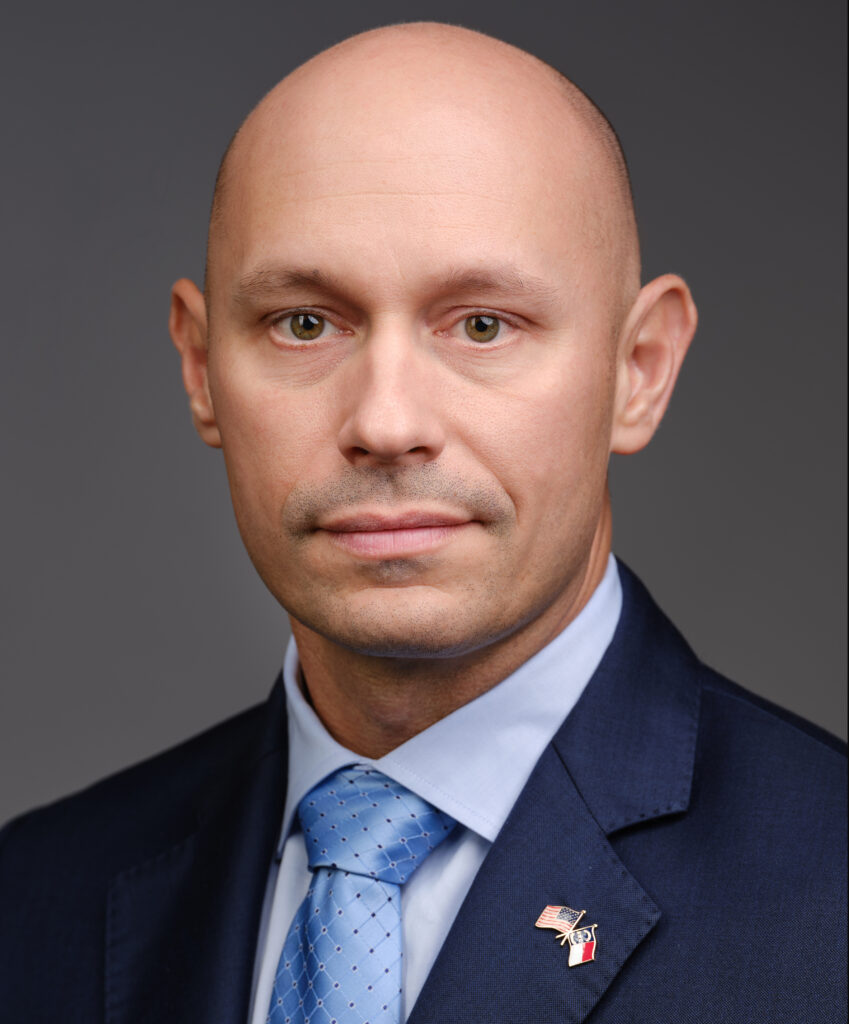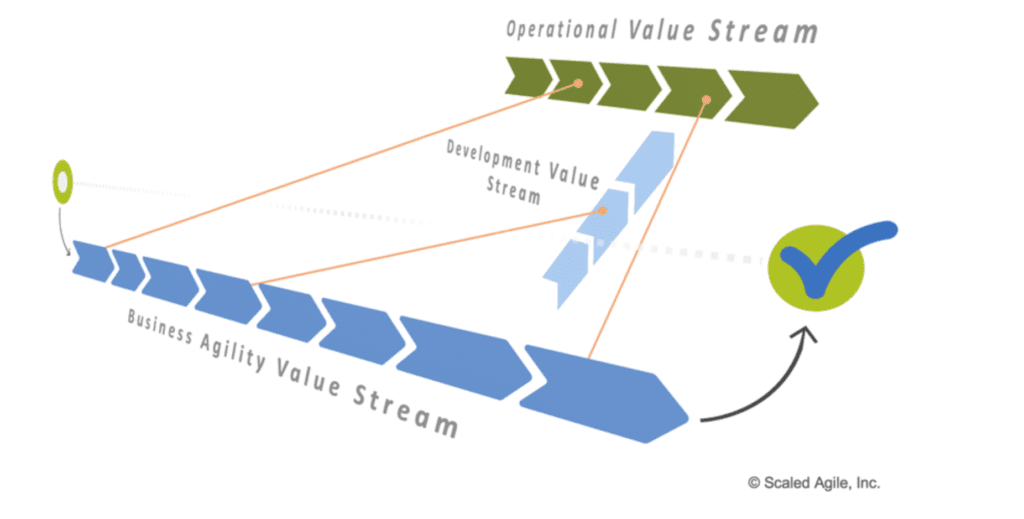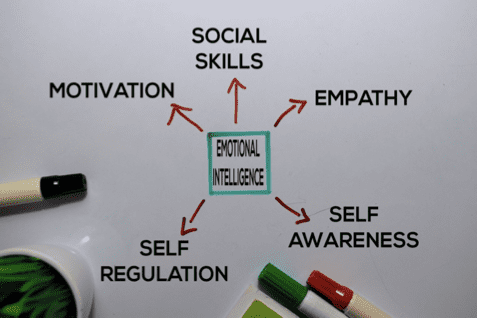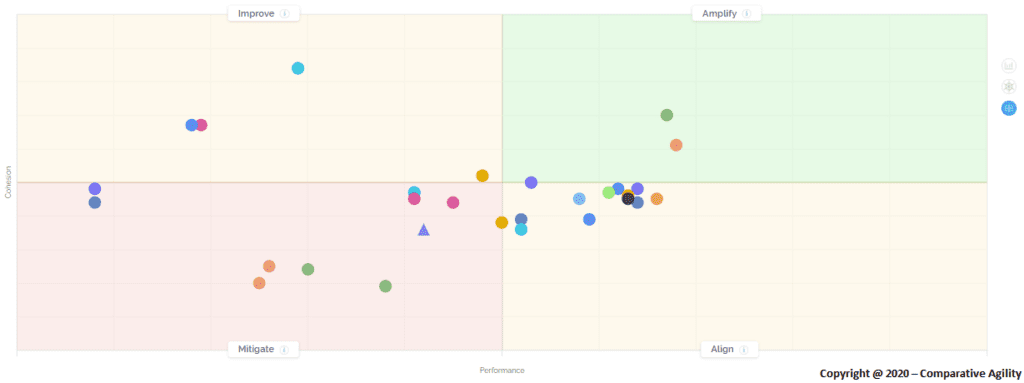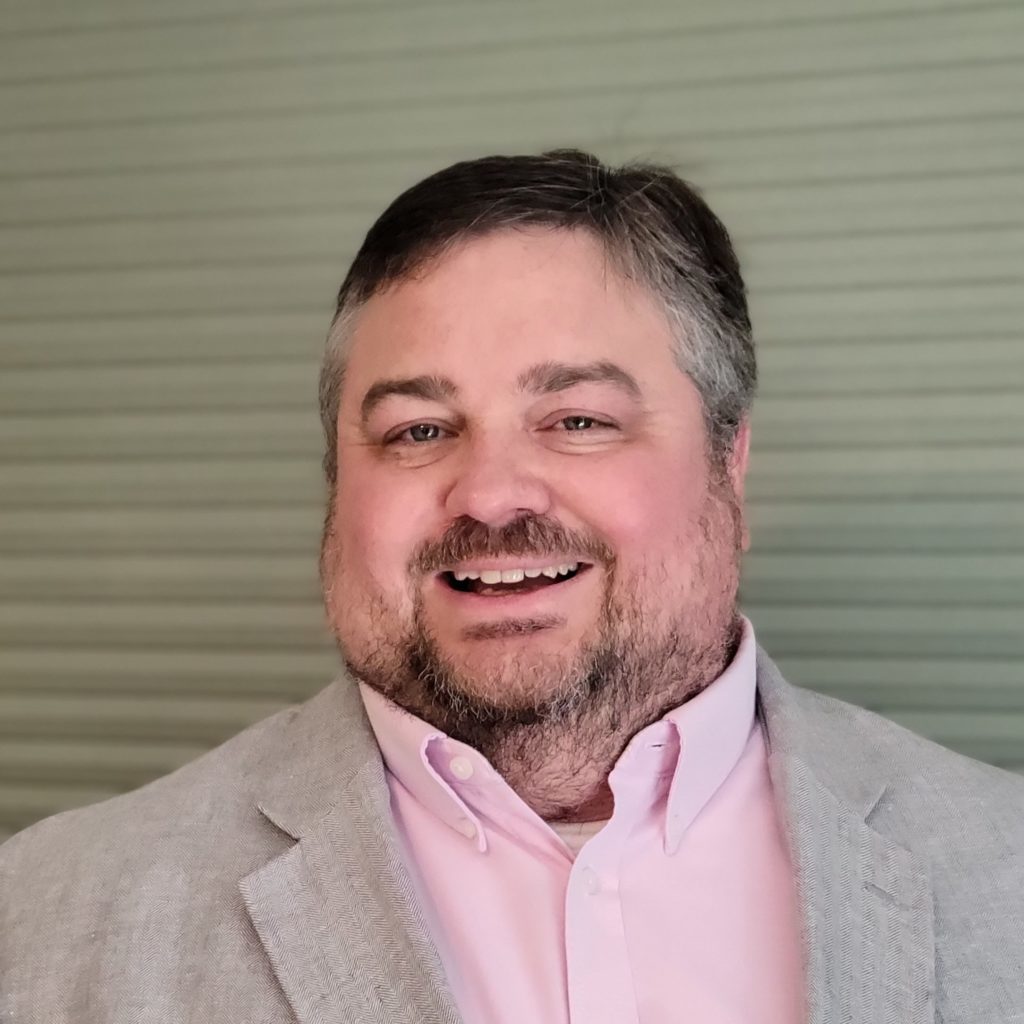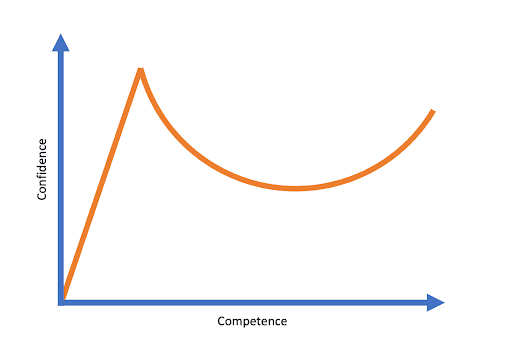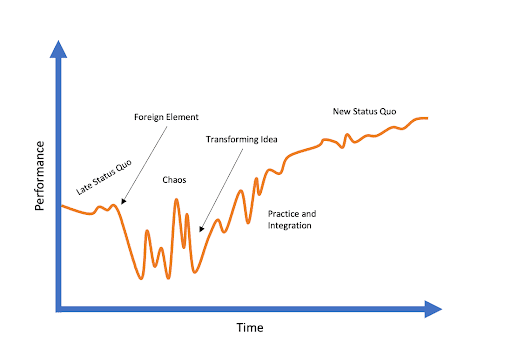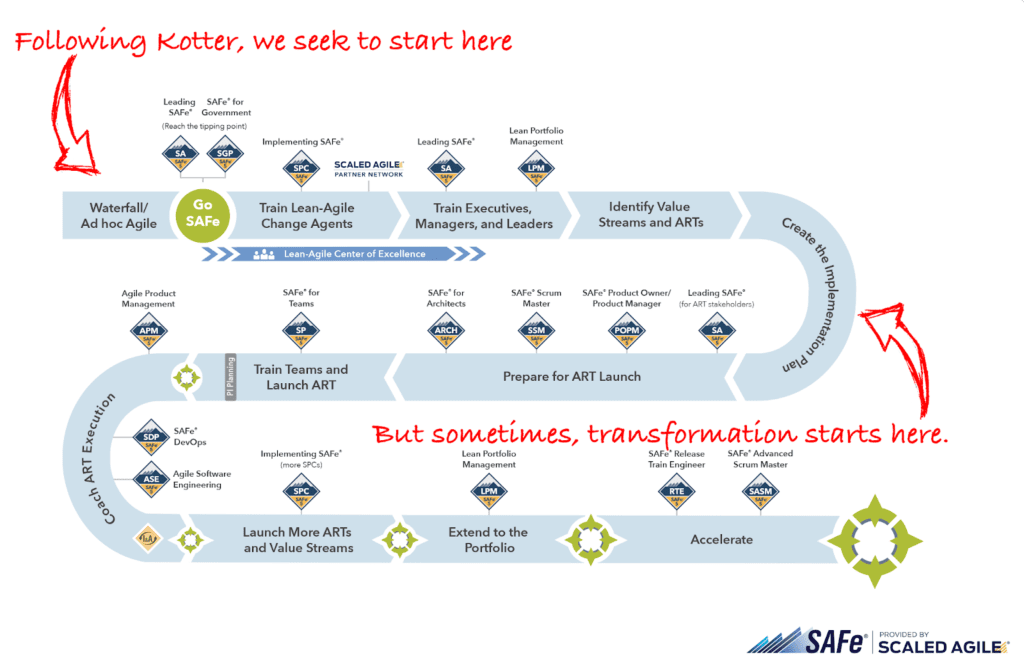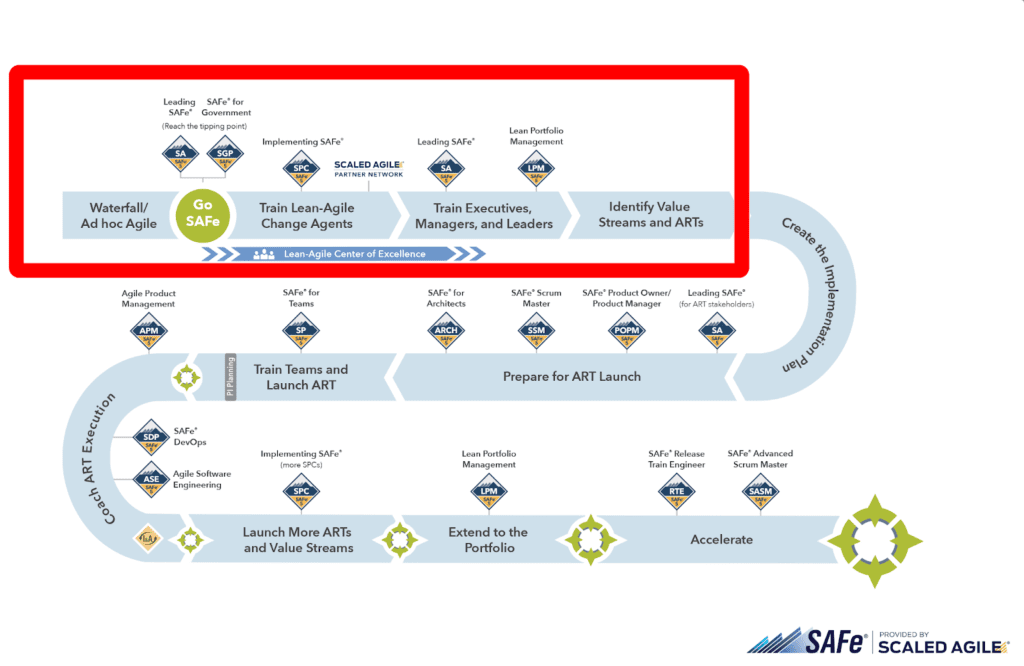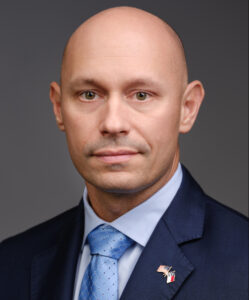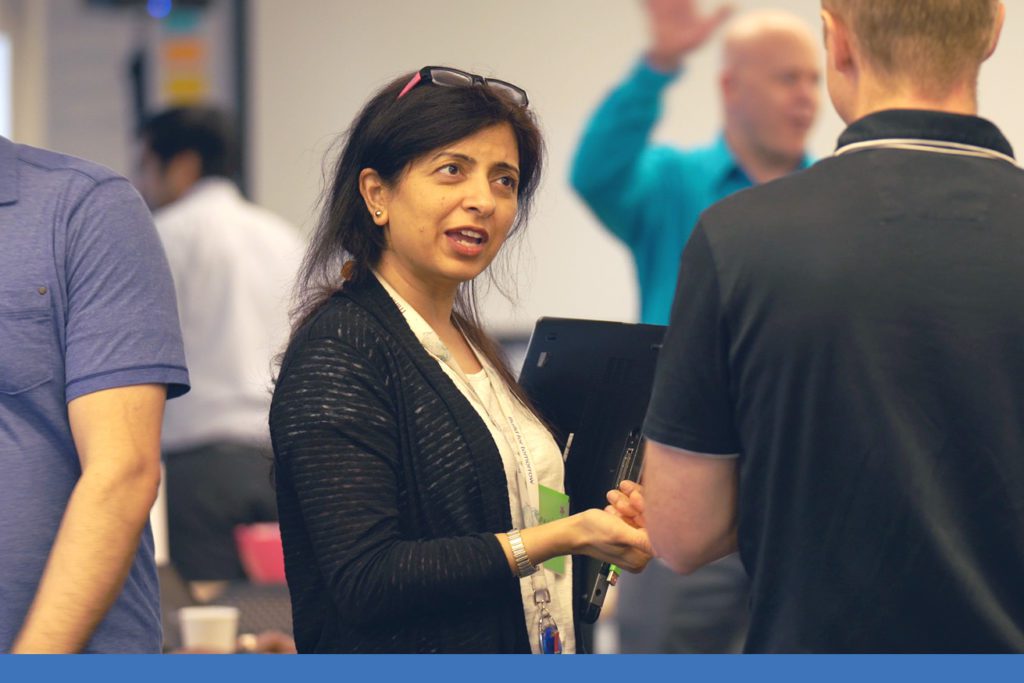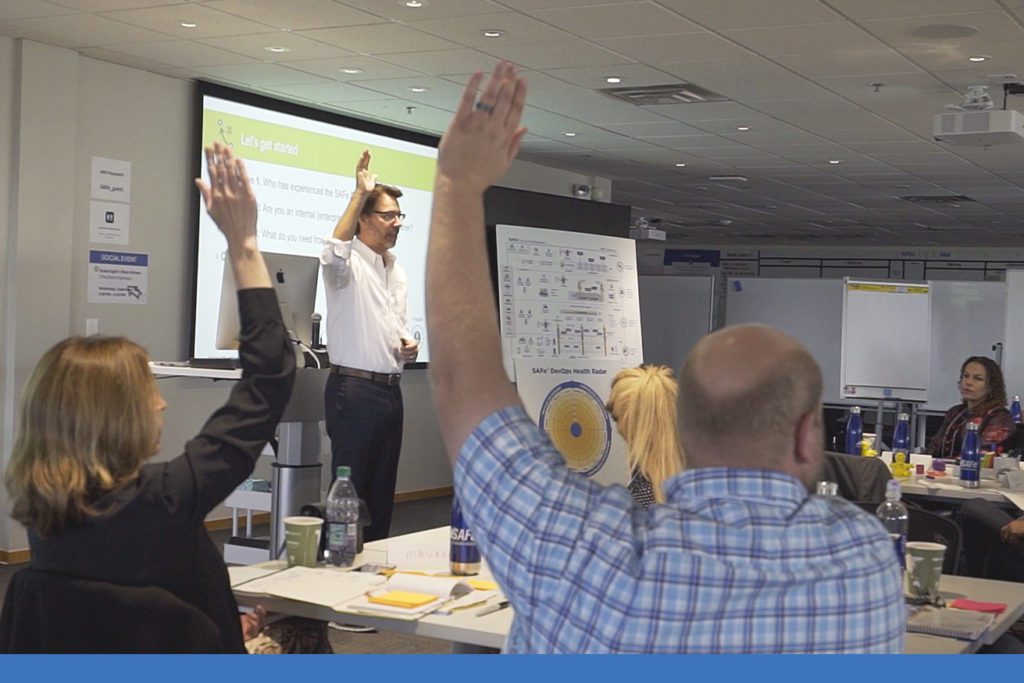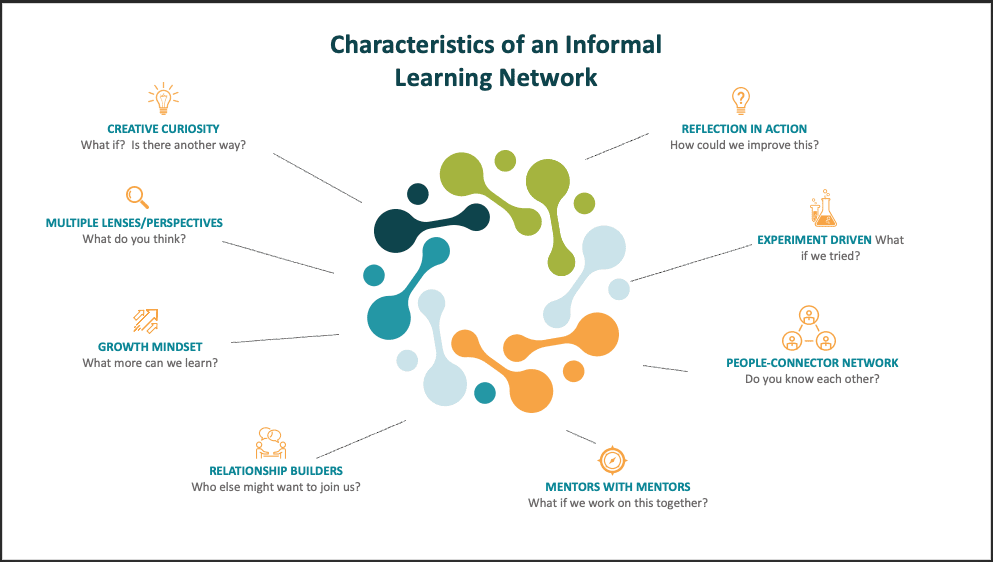In 2021, Gartner shared a report on three steps for implementing Lean Portfolio Management (LPM) using SAFe®. Paired with SAFe community stories, it’s helped organizations feel confident beginning their LPM journeys.
Today, some of the largest organizations in the world have implemented strong LPM practices, roles, and outcomes.
I’m sharing some of the learnings from my journey inside one of these vast organizations. I’ve also included great insights from the LPM community at large.
These learnings are organized into 12 brief tips you can use in your own LPM implementation.
If you’re interested in learning more about one of these tips, take a minute to fill out the survey at the end of this post. It will inform my next blog in this series, where I’ll explore one of these 12 tips further.
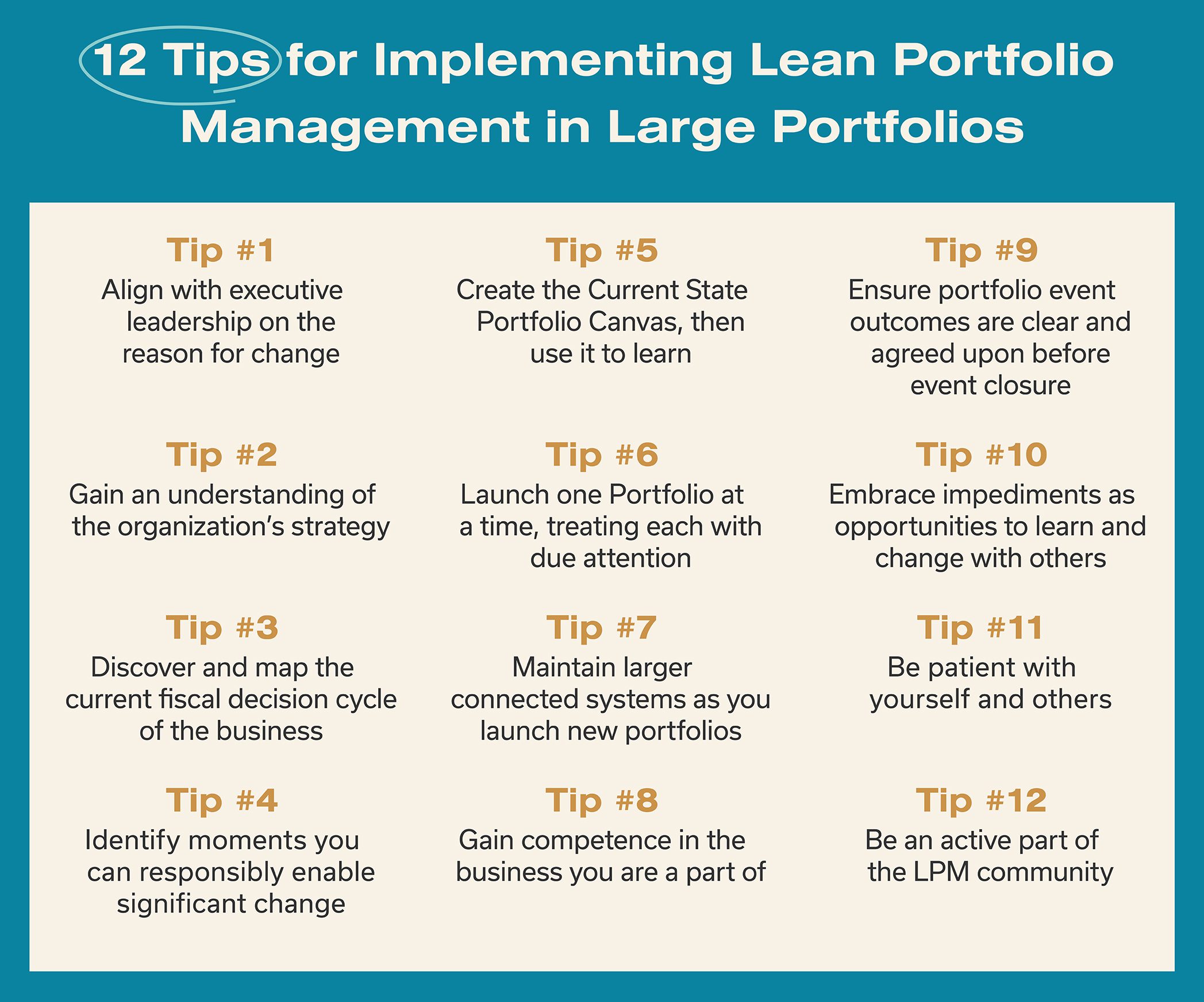
Tip #1 – Align with Executive Leadership on the Reason for Change
When implementing Lean Portfolio Management at a large organization, you’re often updating the effectiveness of hundreds of millions, even billions of dollars of decision-making. You’re also affecting tens of thousands of people within the organization.
Change at this span requires top-level alignment and scripting.
Take the time to align with existing executive strategy leaders, c-suite, and senior financial leadership in articulating the existing Portfolios. This practice will lead to long-term success.
Begin with the end in mind by determining the strategy and outcomes. This will ensure alignment with executive leadership on both these fronts. It will also make the implementation of my next tip easier.
Tip #2 – Gain an Understanding of the Organization’s Strategy
Once you understand the strategy, you can help innovative portfolios emerge.
Alongside senior leaders, consider key questions. Base these answers on known strategic shifts and market research:
- What new portfolios will we need to create in the upcoming two years?
- What results would we like to be touting in future shareholder calls?
- How do our current solutions create a blended end-user experience?
- What pairings could we make across solutions to improve outcomes if we connected their work more?
Tip #3 – Discover and Map the Current Fiscal Decision Cycle of the Business
Your organization has a way to identify and earmark funds for a cycle. Many organizations have a 12-or-18-month fiscal process. They’re often aligned to the calendar year.
Identify what critical decisions happen when in your organization’s current schedule. Then determine the action each decision initiates. Use the same skills you would use to map a value stream to map your fiscal process.
For example, in many organizations, before using LPM, they identify the amount of capital to be allocated. This leads to allocating this large amount to each business portfolio to then be further broken into projects.
Tip #4 – Identify When You Can Responsibly Enable the Most Significant Change
Understanding the current state of your organization’s decision-making process is important. It presents the best time of year to make large changes.
Here’s an example.
Your company determines enterprise-level capital and operational expenditure goals for the upcoming year in June. If you change this for a single portfolio in January, it will get little traction. You’ve chosen the wrong time of year to make a critical change.
It’s best to give enterprise strategists a heads-up when introducing a new way of using strategic lean business cases.
Having a conversation with your strategists a couple of months ahead of crafting the strategy for the next cycle will give them enough time to plan the new lean business cases, which will be funded as MVPs.
This is an opportune time to introduce your new ideas. They’re more likely to have a lasting impact because it gives the organization enough time to prepare for the new process.
Tip #5 – Create the Current State Portfolio Canvas, Then Use It to Learn
If a change agent decides to place an existing set of ARTs into a Lean-Agile portfolio without taking into consideration the current state, this will lead to lots of re-work. It will also lack long-term effectiveness.
Working with others is critical when articulating and mapping the current solution landscape.
Completing the portfolio canvas as a Lean Portfolio Management team ensures all team members’ perspectives are considered. This makes for a more accurate vision of the current portfolio state.
Use the canvas to visualize which bundles of ARTs and value streams will best accomplish your enterprise goals.
Tip #6 – Launch One Portfolio at a Time, Giving Each Due Attention
Trying to adapt every portfolio to LPM at once is unlikely and unwieldy at this scale. As is the case when launching ARTs, it’s important to give each SAFe portfolio due attention.
Use the Adopt LPM practice guides for each new portfolio. Ensure each portfolio completes every step from the practice guides. Apply the same rigor and love to each portfolio.
Additionally, the LPM implementations for each portfolio should remain in concert with one another. Remaining aligned with Enterprise Portfolio Management will prepare you for the next tip.
Tip #7 – Maintain the Larger Connected Systems of the Organization as You Launch New Portfolios
When implementing Lean Portfolio Management in large organizations, there will be periods of flux. Sometimes, some areas of the business will be using LPM practices while others aren’t. Therefore, it’s important to apply systems thinking so you don’t lose focus on how decisions affect other areas of the organization.
For example, let’s say a retail portfolio begins implementing digital coupons with LPM faster than a digital consumer portfolio still using a yearly or multi-year set of practices. In this situation, the end consumer will feel a brand disconnect that could harm the business.
Understand the status of all portfolios in the lifecycle of maturity and implementation. Architecting the change of the connected portfolios is vital to achieving business agility.
Tip #8 – Gain Competence in the Business You Are Part Of
Lean and Agile understanding is a beginning, not an end. A transformation leader helping shift portfolios towards LPM should understand the organization’s context.
Consider a transformational leader who pushes LPM practices without understanding the regulations which surround the business. Is it ok to prioritize all epics across the board similarly?
In your company, do you have funds that must be spent on certain types of solutions and outcomes? Non-profits, for example, may have earmarked funds towards specific solutions that, if unmet, could mean losing their non-profit status.
True innovation lies in these context-based understandings.
Tip #9 – Ensure Outcomes of the Portfolio Events Are Clear and Agreed upon before Closing an Event
Be clear and consistent when sharing outcomes and resultant actions with the value streams in the portfolio. Ensure the members of the value streams—teams, ARTs, leaders, and associated people managers—know when and where to expect the communication.
Communicate outcomes of the portfolio events widely. The various events intend to create alignment for the members of lean portfolio leadership, the associated value stream members, and other enterprise portfolios. This enables flow across the entire organization.
Tip #10 – Embrace Impediments as Opportunities to Learn and Change with Others
Portfolio-level change agents, Lean-Agile Center of Excellence (LACE) leaders, and Value Management Office (VMO) members will encounter multiple transformation impediments.
These impediments range from:
- Personalities vehemently against changing the status quo
- Leaders who add ad-hoc work to the system without aligning with the company’s goals
- Systems that aren’t yet built to handle the new way of working gracefully
- And more
Pair outside of your normal list of co-workers. Pairing with your detractors (like those mentioned in the bulleted list above) will help you grow. It will also make the difference between ‘transforming’ LPM and ‘doing’ LPM. Courageously be ready to state that a better answer can be built together.
In my own journey, portfolio leaders I partnered with who were at first my biggest detractors to change often became not only my biggest change champions but have continued to reach out for help and advice after moving on to new organizations.
Tip #11 – Be Patient with Yourself and Others
Implementing Lean Portfolio Management is more complex than taking a class and launching LPM effectively in the next few weeks, especially when multiple portfolios exist in the organization.
Transitioning the way millions, sometimes billions of dollars, are utilized is a responsibility to take very seriously and with appropriate patience.
One way to do this is by adjusting how you set your goals.
For example, you may be tempted to set a goal like ‘I will have LPM launched in 1 year.’ This is large, overwhelming, and potentially unrealistic. When you can’t achieve it, you’ll feel frustrated.
Instead, focus on a goal that is more specific and focused on a smaller, more realistic step.
One way to adjust the above example is ‘I will partner with finance and enterprise teams to align on the current financial tracking and agree on an improved future state with a prioritized backlog to get there within 6 months.’
This method does three things for you. It gives you a smaller time frame to work with and specific steps to help you on your way to the overall goal of launching LPM. It also helps you have patience for yourself. Finally, it grounds you in the original why for the change when things get chaotic.
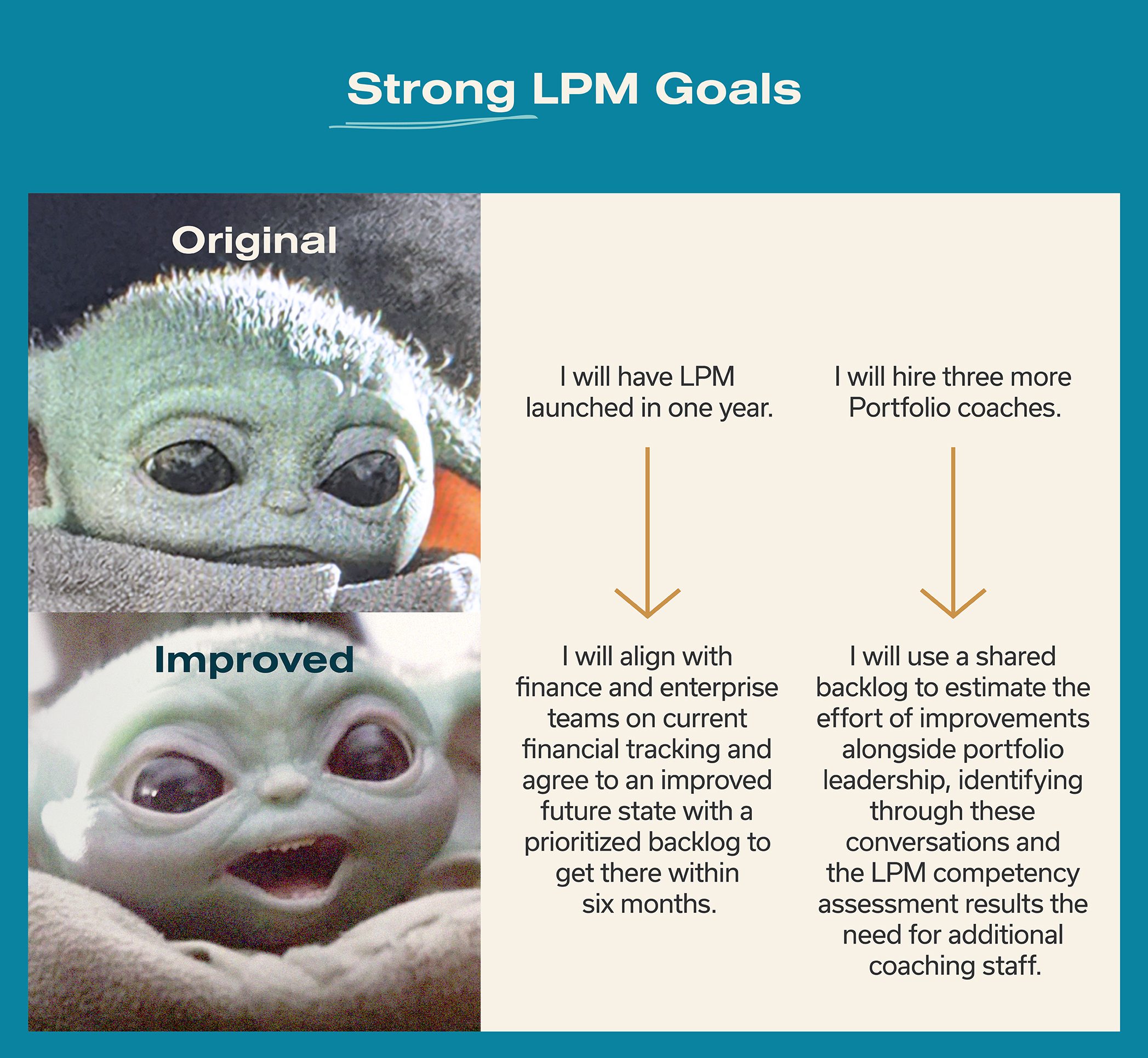
Tip #12 – Be an Active Part of the LPM Community
We all learn from each other, so share what tips you discover! SAFe Studio has an LPM forum dedicated to sharing community insights.
I found my LPM community by attending webinars, conferences, and meetups. I then reached out and connected to those who either inspired me or were asking for help.
I’m so excited to hear about your experiences, and others are too!
Want More LPM?
Hopefully, one or more of these tips provoked a new idea for your LPM implementation.
If you’re interested in learning more about these tips, take a minute to fill out this survey. It will help us determine which tip to explore further in a future blog post. Cast your vote to ensure we pick the one you want to learn more about.
In addition to these tips, here are some resources for getting started and the most out of your LPM implementation.
- Portfolio SAFe explanation
- Lean Portfolio Management article
- SAFe Studio Adopting LPM practice guide and tools
- Implementing SAFe Lean Portfolio Management for Executives webinar
- Getting LPM to Stick in Your Organization podcast
- LPM in the Wild podcast
- Portfolio Canvas: Current State video
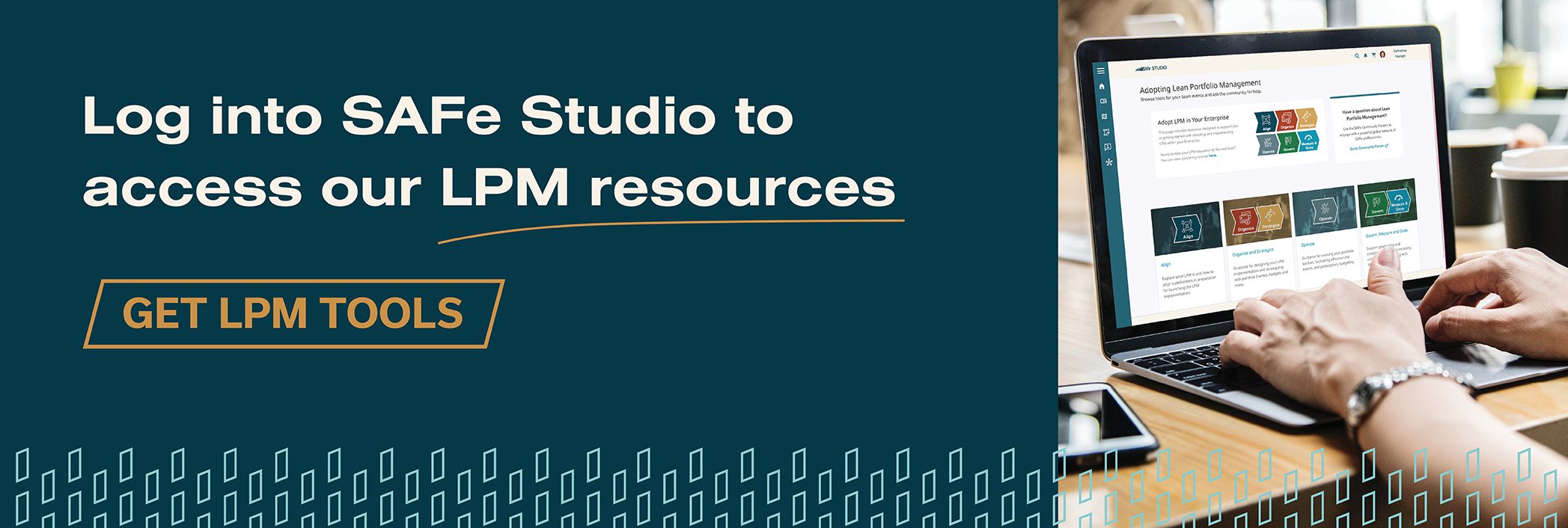
About Rebecca Davis

Rebecca Davis is a Scaled Agile Framework team member within Scaled Agile, Inc., a SAFe Fellow, SPCT, and a Principal Consultant. She has led multiple transformations as a LACE Director, RTE, Portfolio Manager, and Coach. Rebecca has experience helping organizations create joy in the workplace by connecting employees to each other and user outcomes.
Connect with Rebecca on LinkedIn.

